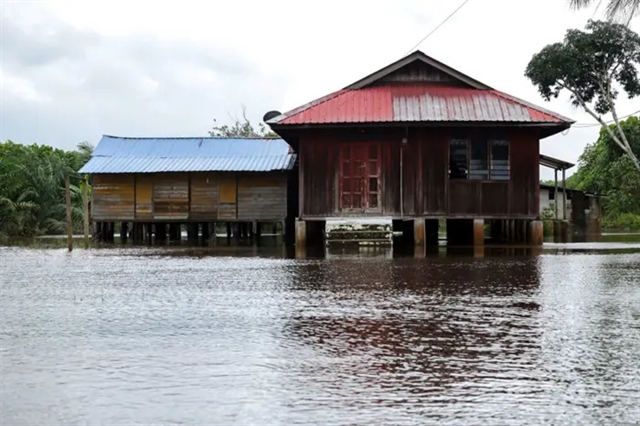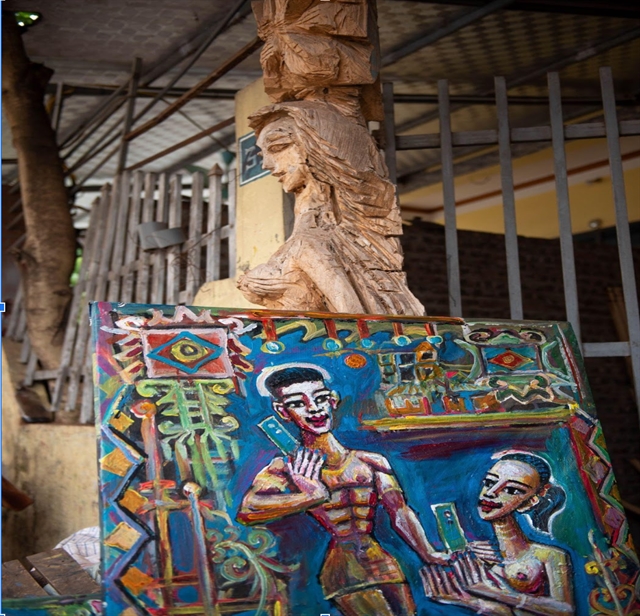 Features
Features

Nga Sơn District in the central province of Thanh Hóa still has traces of the Ba Đình war base among villages weaving sedge mats, familiar to many generations, as well as other relic sites like Mai An Tiêm Temple and Từ Thức Cave.
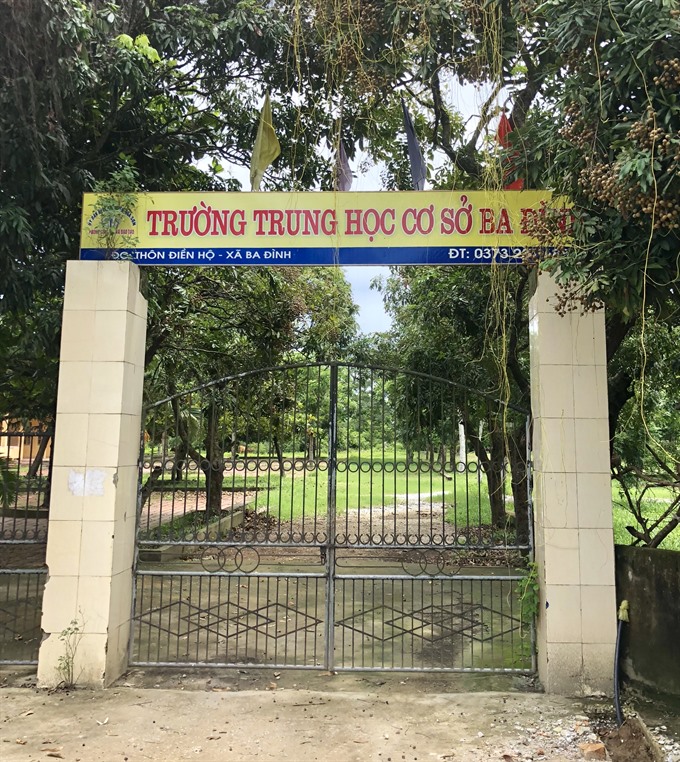 |
| Historic place: The site of the base is now located inside Ba Đình Junior High School. VNS Photos Trần Mai Hưởng |
By Trần Mai Hưởng
Nga Sơn District in the central province of Thanh Hóa still has traces of the Ba Đình guerrilla base among villages weaving sedge mats, familiar to many generations.
The name Ba Đình has become an important part of the history of the area.
The Ba Đình Uprising took place in 1886-87 under the command of Đinh Công Tráng, Phạm Bành and Hoàng Bật Đạt, gathering local patriotic farmers to fight against French colonialism.
In respond to the call of the Cần Vương (Save the King) Movement, the insurgents built a defence base in the territory of three villages, namely Thượng Thọ, Mậu Thịnh and Nghĩa Khê.
In each village, there is a communal house; from each communal house, one can see the other two communal houses.
The name Ba Đình (Three Communal Houses) stems from this area. The insurgents built a strong defence system with deep moats surrounded by forests of bamboo. Each communal house was built as an independent defence post and can support the others [communal houses] in fighting. Military experts assessed the Ba Đình base a model of large-scale defence system of the then Cần Vương Movement.
From the base, under the command of General Đinh Công Tráng and his assistants, the insurgents launched many assaults against the French, controlled local traffic routes, destroyed many vehicles and inflicted heavy casualties to the enemy.
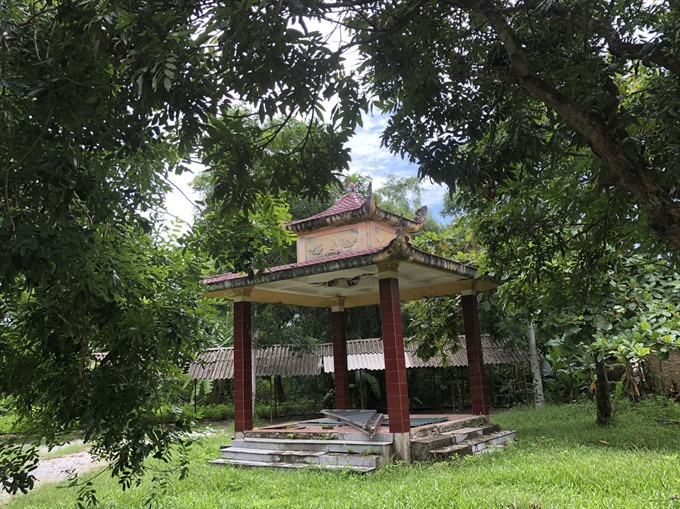 |
| Forgotten: A covered area in the school yard is in disrepair. |
By the end of 1886, French authorities sent thousands of soldiers with heavy weapons to attack the Ba Đình base. Despite being outgunned, the insurgents fought bravely for 32 days and nights.
The Ba Đình Uprising is a historical symbol in the country’s history, representing the patriotism of Vietnamese insurgents in the Nga Sơn region at that time.
According to historical documents, in the middle of 1945 the then Hà Nội’s Mayor, Dr Trần Văn Lai, renamed Puginier Square (name of a French priest) near the former French Governor Palace as Ba Đình Square.
A few months later, after the success of the August 18 Revolution, Ba Đình Square became an important venue in history, where President Hồ Chí Minh read the Declaration of Independence on September 2, announcing the birth of the Democratic Republic of Việt Nam.
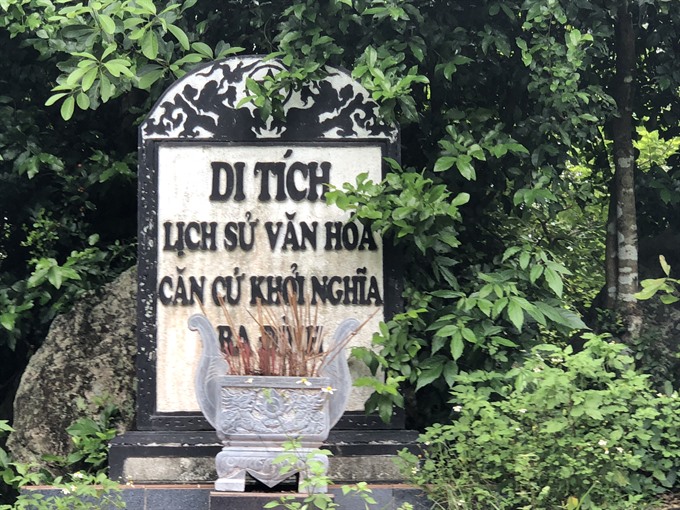 |
| Important spot: A stele recording the site in the school grounds. |
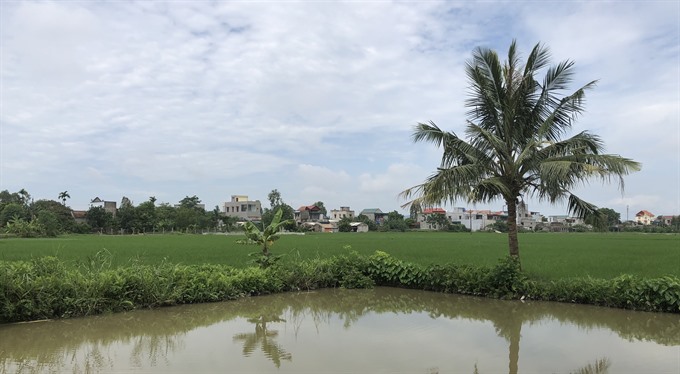 |
| Growth: Today’s villages host new houses and fertile rice fields. |
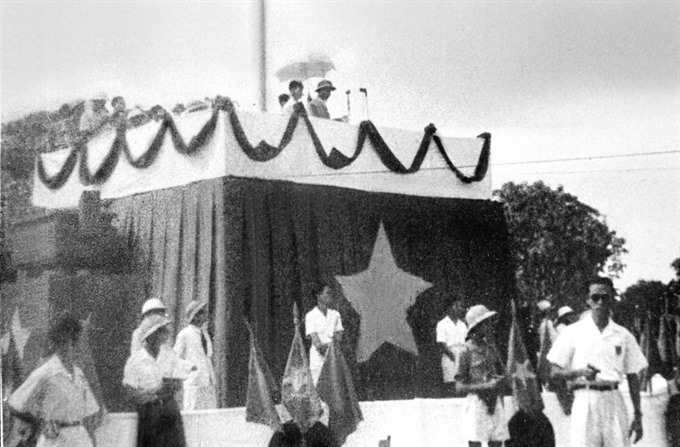 |
| Birth of a nation: President Hồ Chí Minh reads the Declaration of Independence at Ba Đình Square in Hà Nôi, September 2, 1945. VNA/VNS File Photo |
In present Nga Sơn District, life has changed. The living standards of local residents have improved, new houses have been built and fertile land nurtures bumper crops.
More than 130 years have passed since poor farmers dared to fight for the homeland’s independence. Present Ba Đình Commune has been enlarged, with bigger houses and good infrastructure facilities.
What’s left of the old Ba Đình Base, a national historical relic site, is a stone stele in the Ba Đình Junior High School.
Local authorities have drafted a plan to upgrade the relic site.
I think Ba Đình deserves a solemn relic site to record the historic event with great value.
A small part of the total amount approved for a ceremony to celebrate the birth of Thanh Hóa Province, expected to reach VNĐ104 billion (US$4.5 million), should be used to preserve the Ba Đình historical relic.
The celebrations is planned for between May 1 and 7, 2019. VNS


.JPG)



